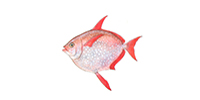Thank you for visiting the Seafood Selector. EDF is planning a new approach to providing information to consumers about good seafood choices. Please come back soon for updates.
Opah

Opah, © Amadeo Bachar
Recommended servings per month
| Contaminant | Men | Women | Kids 6-12 | Kids 0-5 | |
|---|---|---|---|---|---|
| Opah (US) | Mercury | 1 | 1 | 1 | < 1 |
| Opah (Imported) | Mercury | 1 | 1 | 1 | < 1 |
Eco details:
Little is known about the basic biology of opah, making it difficult to determine population health or how effectively they are managed.
These fish are caught exclusively as bycatch in tuna longline fisheries, which kill sea turtles, seabirds and sharks.




